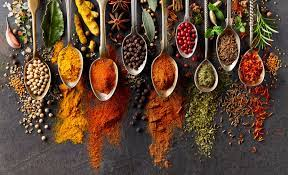Personal Menu

Image courtesy of Master Class .com
This post is to detail for my family and friends the various meals that I cook. This way, they can reference this page for links to the recipes that I use, as well as let me know which of my commonly frequented meals they would like me to make for them. I’ll break it down by cuisine, although I only generally follow the recipes’ guidances, so what I actually prepare can sit in a continuum between cuisines.
Food
Chinese
Chinese food is heavily influence by the idea of the 5 tastes: sweet, spicy, salty, sour, and umami. A good dish contains all these 5 flavors in varying degrees. Like any of the other regions, Chinese cuisine is incredilby varied and ahrd to generalize as whole. In fact, China has 8 distinct culinary traditions called the 八大菜系 or Eight Treasures. Their respective provinces are Cantonese, Sichuan, Anhui, Shandong, Fujian, Jiangsu, Hunan, Zhejiang.
I primarily explore the Sichuan food as I love the spicy and numbing effect of the red and Sichuan peppercorns.
- 麻婆豆腐 (Mapo Tofu)
This spicy and slightly numbing dish is a staple of my chinese food and contains tofu and ground pork as its main ingredients. - Soup lol
I don’t really know how else to call this. It’s just chicken bouillon with bak choi, a marinated egg, noodles, and mushrooms. It’s what I often cook when I don’t feel like doing too much. - 三杯鸡 (Three Cup Chicken)
This incredibly fragrant dish has a soy sauce, Chinese cooking wine, and sugar based glaze with copious amounts of basil, ginger and garlic. Shitake mushrooms can either substitute or be added in addition to the chicken.
Indian
Generally speaking, Indian cuisine is marked by complex and expert use of spices. I don’t have much experience with other South Asian cuisines, although I believe they sit in a gradient between other cultural regions in proportion to their physical proximity (i.e. the further west one goes to Iran, the more influence by Persian cooking). Even within India, the cuisine is incredibly varied, particularly between the North and South divide, so it’s hard to make strong generalizations other than some core spices and cooking methods.
The majority of India is Hindu, which invites a ovo-vegetarian (i.e. pure vegetarian + eggs) lifestyle, so generally, there meals are heavy in vegetables, legumes, and grains. Not only are the eating habits incredibly healthy, but also environmentally sustainable, for the cuisine leverages ingredients with smaller carbon footprints (e.g. vegetables, legumes, grains, etc.) and also leverages what many other cuisines considers scraps to reduce food waster (e.g. watermelon rind and banana peal). While the latter may not be incredibly common, they still exist more so than in other cuisines.
I personally heard from my high school friend to always toast the spices quickly before cooking the remaining food, so as the flavors meld in the oil and thereby spread to every corner of the dish.
- Red Dhal (Red Lentils)
This Indian staple has a base of red lentils (Dhal in Hindi) with cumin, coriander, turmeric, star anise (optional) toasted in coconut oil. - Roasted Cauliflower (double the spices in recipe)
Roasted cauliflower seasoned with olive oil, coriander, turmeric, garam masala, and black pepper. - Chicken Saag
This chicken dish features a lot of spinach and chicken. The addition of whole fat Greek yogurt adds a slight tanginess and richness to the meal as well. - [Palak Paneer/Tofu]
This is another dish with copious amounts of spinach and fragrant spices. I serve it either with paneer or, if paneer is not convenient, fried firm tofu.
Indo-Chinese
I had no idea of this fusion until my former roommate introduced me to Gobi Manchurian after trying my Roasted Cauliflower. I really need to explore this cuisine fusion more.
- Gobi Manchurian
Twice fried cauliflower in a batter spiced with coriander, turmeric, garam masala and cumin, paired with an aoili with jalapenos, coriander leaves, lime juice and honey.
Italian
This cuisine has become a staple in the US and has a great diversity within its cuisine, similar to India in that the cuisine strongly split along the North and South divide. My personal favorites are anything based in olive oil and vegetables, which I believe comes from the South, whereas the North uses more creams and tomato.
- Caprese
Slices of tomato with extra virgin olive oil, balsamic vinegar, and goat cheese (instead of mozzeralla as is traditional), garnished with basil.
Japanese
Despite working in Japan for a summer, I still don’t cook nearly enough Japanese food. Below are the few I cook:
- 親子丼 (Oyako-don)
This Parent-Child Bowl is a mild and hearty paring of chicken and eggs with sliced onions cooked in a mildly sweet and salty soy sauce and mirin sauce served over hot rice. - ざるそば (Cold buckwheat dipping noodles)
These noodles are served cool and dry, to dip in a soy sauce, mirin, daikon radish, green onion sauce. Particularly refreshing on a hot summer day when too much food will make you drowsy. - Japanese Curry
Japan’s take on curry. I really just use the instant Golden Curry packets, so hardly cooking at all. Another staple of mine. - Musubi (Spam Rice Sandwiches)
This Japanese-Hawaiian dish is super rich from all the yummy fats in the spam. It’s a pretty simple meal to make, and Ill sometimes add additional ingredients like spinach or kimchi.
Korean
This cuisine never ceases to amaze me. Korean cuisine has a strong command over both vegetables and meats, while also leveraging fermenting for the hundreds of different kinds of kimchi it’s developed. It’s still incredibly easy to eat healthy by way of plates with good ratio of vegetable to meat and many fermented products. I can’t wait to explore deeper into Korean fermentation techniques. Honestly, I get all of my recipes and insights from Maangchi, so this section will be comprised of purely links to her food website. I highly recommend her because 1) she explains how and why she does what she does in great detail and 2) her videos are so entertaining to watch. Please check her out and maybe even buy her cookbook if you want.
- 김치순두부찌개 (Kimchi Soft Tofu)
This stew is comprised of kimchi, silken tofu, pork, and green onions, among other ingredients. This is honestly one of my favorite dishes ever. Cannot recommend this enough, although my version definitely cannot measure up to an actual tofu kitchen’s of course. I highly recommend checking out any on Buford highway or Duluth near Atlanta, GA. - 치즈불닭 (Cheesy Fire Chicken)
Although I try not to use dairy too much, this spicy dish with a lightly broiled mozzarella topping really just hits differently. The chicken is cooked in a spicy-sweet sauce with onions and garlic. - 막김치 (Napa Kimchi)
I typically follow this recipe except that I 1) pre-cut it into bite-size pieces and 2) I use a boiled potato instead of glutinous rice flour paste. - 떡볶이 (Spicy Rice Cakes)
This common Korean street food slaps, especially after a light night out at a bar. Overall, this slightly sweet and quite spicy dish features a lot of fun textures, from chewy rice cakes, firm fish balls, hard-boiled eggs to a thick and delicious over poured everything. - 시금치나물 (Seasoned Blanched Spinach)
This side dish is a great way to add more spinach to a meal and lighten it. It’s blanched spinach seasoned with sesame oil, sesame seeds, garlic, rice vinegar, red pepper, and soy sauce.
Mexican
To me, Mexican cuisine is characterized by incredible use of smoke and spice. All the spices and their smoked derivatives add an incredible depth to any dish or sauce. Mexican cuisine is one of the culinary treasures of the world, and I have so much more exploring to do of this single region.
- Black Beans
More of a side or a base of another dish, I use Ancho pepper, chicken stock, roasted bell pepper, yellow onion, and jalapeno to prepare my beans. - Mole
Honestly, I can’t claim that I make this. I honestly just buy the mole paste at the latin grocery store and prepare that. Red mole is a paste that a nun prepared for the Pope when he came to visit their monastery. Due to the lack of supplies, she whipped up this dish with the ingredients at hand, and it was a hit. It’s characterized by chocolate, smoked peppers, and about 20 other ingredients.
I love preparing this with shredded chicken especially , with rice or even with bread as a sandwich. - Enfrijoladas (Bean Enchiladas)
This meal uses a base of vegetables, pulled chicken or egg inside of the tortilla, which is then covered with a bean sauce, garnished with cilantro, sour cream, jalapeño and chorizo. - Sopa de Lentejas (Lentil Soup)
This light soup makes for a great accompaniment to any main dish, or even by itself served with a slice of sourdough toast. - Caldo Tlalpeño (Chipotle Chickpea Soup)
This smokey soup has a base of chickpeas and chicken stock, garnished with avocado, chipotle pepper, pulled chicken and queso fresco.
Peruvian
Peruvian cuisine is another culinary treasure as it’s an interesting mixture of indigenous, Spanish, and Chinese cuisines. For example, there’s a fusion cuisine called Chifa that stands out in Peru for the strong influence of Chinese Cuisine.
- Ceviche
More of a cooking method than specific recipe, but you can follow this page for reference on how to prepare ceviche properly safely. - Tallarines Verdes Still working on making this
My friend has hyped this plate up so much that I have to get good at making this at some point.
Thai
Thai cuisine is yet another fantastic cuisine that I need to explore more.
- Green/Red Curry
Similar to my Japanese Curry, I only really use the Lobo curry packets that this Thai woman recommended me at the grocery store one time. She said the others had too much sodium, but the Lobo packets were good. - Thai Desserts Still working on making these
I love any coconut milk based desserts, so I’ve really got to explore both Thai and Filipino desserts.
Miscellaneous
Any other recipes that I make that don’t easily fit into any of the above cuisines
- Vegan Spinach Soup (Spinach Soup)
This spinach soup is so creamy that it’s surprising that it’s vegan! The trick is to use a boiled potato to blend with the spinach to get the smooth, creamy texture. It delicious served hot in the winter and cold in the summer, ideally with a side of pumpernickel bread and garnished with sunflower seeds. - Roasted Tofu
I only put this hear since I don’t think any single Asian cuisine can claim this basic dish as exclusively their own. It’s essentially a light coating of cornstarch and spices du jour around the tofu roasted until crispy, served with an aoli.
Drinks
Teas
- Barley tea: good for summer, served cold
- Mint tea: good for summer, served cold
- Cardamom tea
- Chamomile tea: good before bed, served warm
- Honey-Ginger tea: good for warmth, served warm
- Ginger: good for energy and illness, served warm
- Kombucha (Raw, Pear-Ginger-Clove-Honey, Blueberry-Sage-Honey, Cranberry-Cinnamon-Ginger): served warm
General Cooking Guidance
1) Never use seasoning oils (e.g. extra virgin olive oil, sesame oil, etc.) for cooking. By seasoning oils, I refer to those that have low smoking points. They 1) easily burn and convert into carcinogens and as well as 2) turn bitter and ruin the flavor of the meal. Only use seasoning oils for low temperature food preparation. Otherwise, use oils with high smoking points: canola oil, soybean oil, coconut oil, etc.
2.) Blending a boiled potato in stock can make for a cream substitute for a creamy soup.
3.) To counter act too much salt, add an acid, such as lime juice or rice vinegar.
